Fuxiang Wang
Inference-InfoGAN: Inference Independence via Embedding Orthogonal Basis Expansion
Oct 02, 2021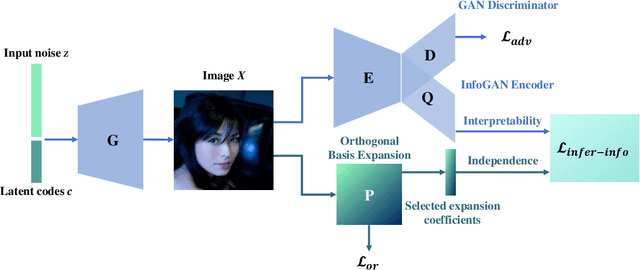
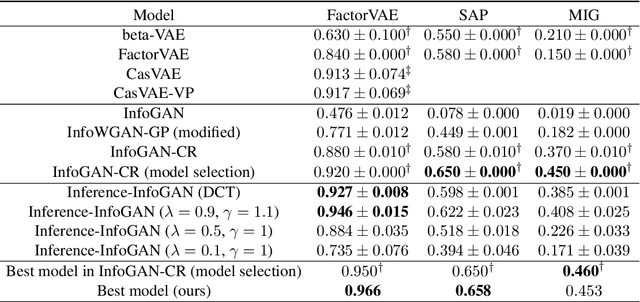
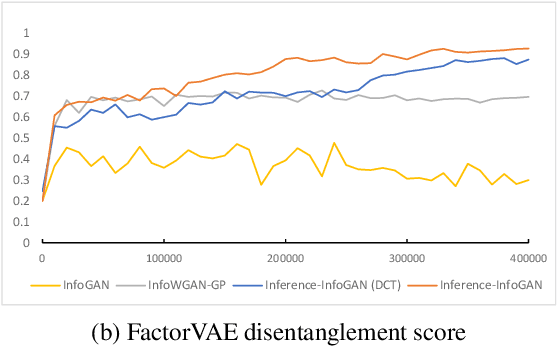
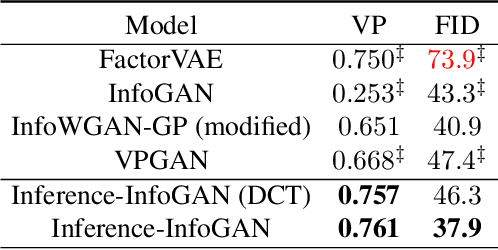
Abstract:Disentanglement learning aims to construct independent and interpretable latent variables in which generative models are a popular strategy. InfoGAN is a classic method via maximizing Mutual Information (MI) to obtain interpretable latent variables mapped to the target space. However, it did not emphasize independent characteristic. To explicitly infer latent variables with inter-independence, we propose a novel GAN-based disentanglement framework via embedding Orthogonal Basis Expansion (OBE) into InfoGAN network (Inference-InfoGAN) in an unsupervised way. Under the OBE module, one set of orthogonal basis can be adaptively found to expand arbitrary data with independence property. To ensure the target-wise interpretable representation, we add a consistence constraint between the expansion coefficients and latent variables on the base of MI maximization. Additionally, we design an alternating optimization step on the consistence constraint and orthogonal requirement updating, so that the training of Inference-InfoGAN can be more convenient. Finally, experiments validate that our proposed OBE module obtains adaptive orthogonal basis, which can express better independent characteristics than fixed basis expression of Discrete Cosine Transform (DCT). To depict the performance in downstream tasks, we compared with the state-of-the-art GAN-based and even VAE-based approaches on different datasets. Our Inference-InfoGAN achieves higher disentanglement score in terms of FactorVAE, Separated Attribute Predictability (SAP), Mutual Information Gap (MIG) and Variation Predictability (VP) metrics without model fine-tuning. All the experimental results illustrate that our method has inter-independence inference ability because of the OBE module, and provides a good trade-off between it and target-wise interpretability of latent variables via jointing the alternating optimization.
An automatic bad band preremoval algorithm for hyperspectral imagery
Oct 19, 2016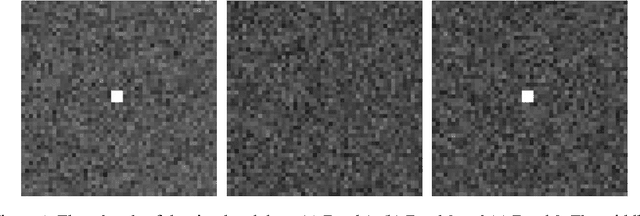

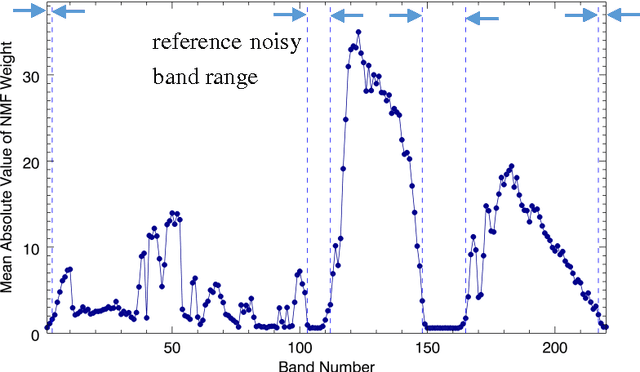
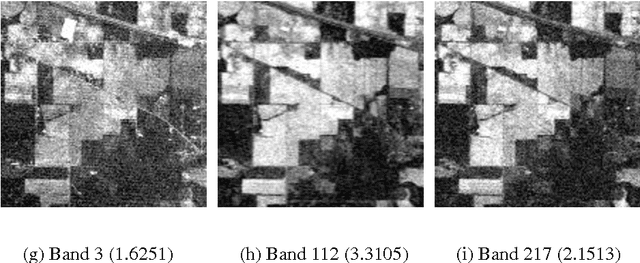
Abstract:For most hyperspectral remote sensing applications, removing bad bands, such as water absorption bands, is a required preprocessing step. Currently, the commonly applied method is by visual inspection, which is very time-consuming and it is easy to overlook some noisy bands. In this study, we find an inherent connection between target detection algorithms and the corrupted band removal. As an example, for the matched filter (MF), which is the most widely used target detection method for hyperspectral data, we present an automatic MF-based algorithm for bad band identification. The MF detector is a filter vector, and the resulting filter output is the sum of all bands weighted by the MF coefficients. Therefore, we can identify bad bands only by using the MF filter vector itself, the absolute value of whose entry accounts for the importance of each band for the target detection. For a specific target of interest, the bands with small MF weights correspond to the noisy or bad ones. Based on this fact, we develop an automatic bad band preremoval algorithm by utilizing the average absolute value of MF weights for multiple targets within a scene. Experiments with three well known hyperspectral datasets show that our method can always identify the water absorption and other low signal-to-noise (SNR) bands that are usually chosen as bad bands manually.
 Add to Chrome
Add to Chrome Add to Firefox
Add to Firefox Add to Edge
Add to Edge